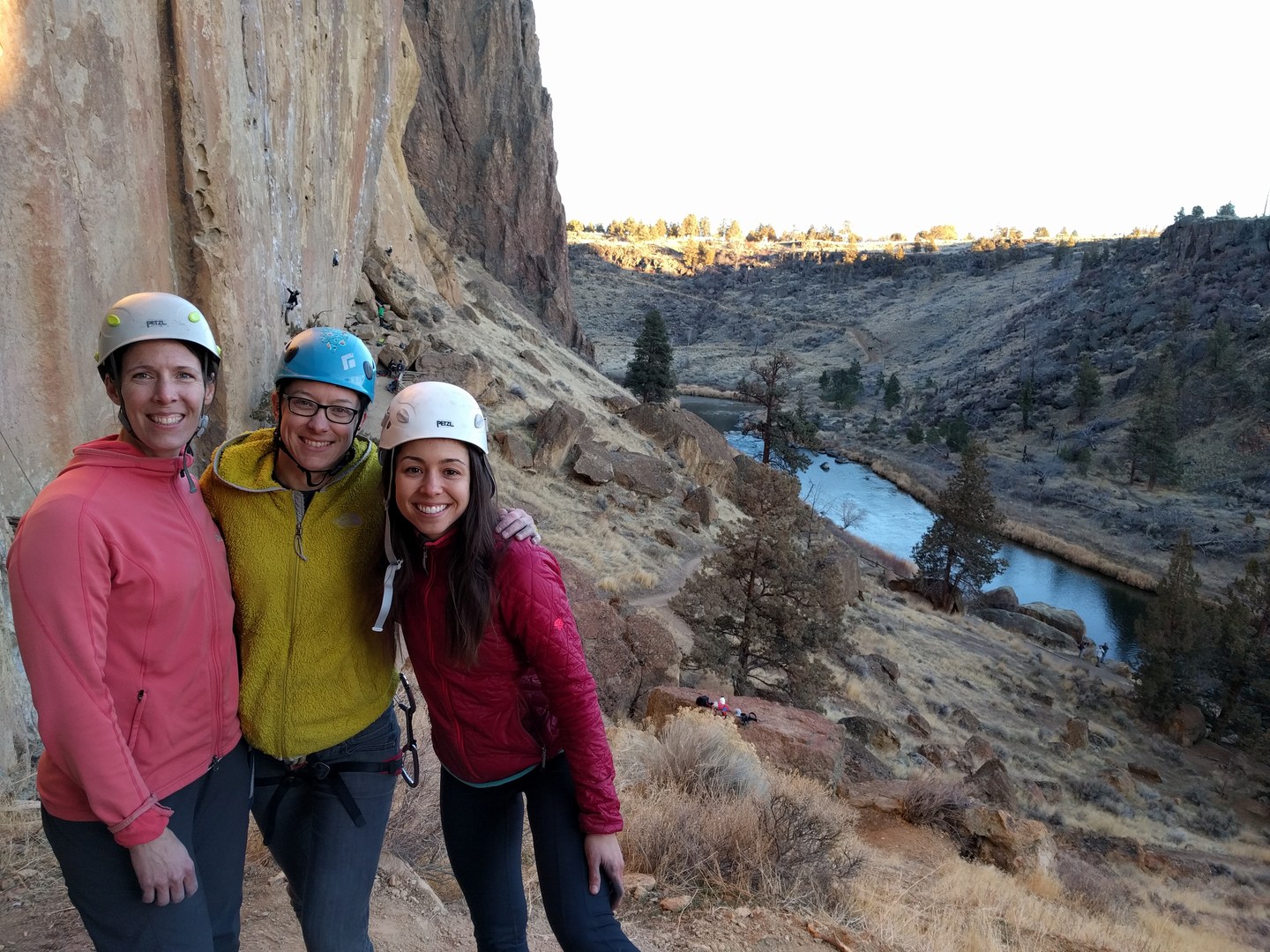You are here
“Would you like to go rock climbing with my friends this weekend?” It was an innocuous question, but in 2005, it felt like a pretty big ask. This was before the rise of the rock gym, and well before I’d developed any sense of my ability to do such a thing. The guy I was dating at the time was an experienced climber, and his friends were climbing hard. “Sure,” I said, and I tagged along on my first trip to the crag with my boyfriend and another guy and girl.
I don’t remember much from that day except the overwhelming sense of fear and dread that bubbled up in my belly as soon as they said, “Okay, climb!” I didn’t know how the rope system worked, what I was tied into, or how to climb. I was out of my mind. “What do you mean? What do I do? What happens if I fall?” Just climb, they said.
I hated every breathless moment of that first climb. When I got back down to the ground I said, “I’m done. I’ll just keep myself entertained for the rest of the day. What’s the point of climbing anyways? There’s a trail up the backside!” I was so frustrated with myself. I felt their eyes on me. I felt like I wasn’t good enough to be there. I felt confused about the technicalities and feared for my safety. I was alone, a newbie surrounded by so much knowledge that no one wanted to share with me.
Luckily, that first terrible experience didn’t keep me away from the rock for too long. When I moved to Oregon the following year, I started looking for mountaineering classes. I wanted to learn more about how the gear worked and what climbing was really all about. In that class, I got hooked. I felt much more comfortable on the rock with a little knowledge and experience. After the class was over, I had several new climbing partners and a burgeoning interest in climbing outdoors.
Since that time I’ve learned how to lead sport, trad, multi-pitch and alpine routes. I enjoy climbing, but I have always suffered from a lack of confidence in myself. What if I fall? What if I fail? What if I’m not good enough? Surrounded by competent, confident and experienced climbers, I floundered. I played the comparison game and never really allowed myself to be patient with the learning process. I almost never volunteered to lead. It was safer and easier to follow. So that’s what I did. I let my partners do the leading while I cowered at the other end of the rope.
Maybe I’m just not cut out for this. I told myself that story so many times. Maybe I should just quit! I’m too scared. I get too upset. I don’t have it, whatever it is. My mind swirled with a cocktail of anger, frustration, fear, anxiety and inability.
I moved to a new town, with no network of climbing partners, which allowed me to take a break. When I moved to Bend, just a quick drive to Smith Rock, I decided it was time to make peace with myself and get back into my climbing shoes.
In Bend, something different happened. Not by design, but by chance. I started climbing with women. Most of the climbing I’d done in the past was with men. And they were great partners. They taught me everything I knew now. But something was just different when I found myself in a team of only women. The dynamic shifted. It was more supportive. I could more easily communicate my goals and fears. My partners encouraged me to lead routes that I thought would be too hard for me. They coached me when I got stuck, mentally or physically. There were lots of smiles and high-fives and positive chatter. I didn’t feel judged or like I was holding anyone back with my perceived incompetence. I felt like there was more of an expectation that I would do some leading. I didn’t even know I needed all of this. I was suddenly a part of a community, even with just one or two women climbing with me.
I’m still not sure what to make of this recent observation. Were my former male climbing partners that bad? Unsupportive? Not sensitive to what I needed from a partner? I don’t think so. I had some great male partners. But the dynamic of climbing with women is just different than when the group is mixed or all male. Part of it comes from me and involves the different expectations I think people have of me. For example, the feeling that, as a woman, I have to work twice as hard just to prove I can hang with the men. Is that from my inner voice, or is that from society? Maybe it’s a little of both.
I can also recall a male climbing partner who stood out from the rest. He climbed much harder than me, and I often wondered why he chose to take me climbing. He helped me push my grade as a leader and a follower, encouraged me to take the lead on a difficult multi-pitch, and was right there with me on some of my hardest and most exhilarating climbs. But he was the exception. So, what’s gender have to do with it?
I know I don’t have the answers. But I do know this: I need to keep climbing with women in order to build up my confidence in myself and to inspire confidence in other women. Whatever struggles I’ve built up in my own head seem to be more manageable when I’m climbing with my ladies. I’ll head to the crag with anyone who asks, but for now I think I’ll keep my female friends on speed dial to see what I can learn next.





Comments
Sign In and share them.